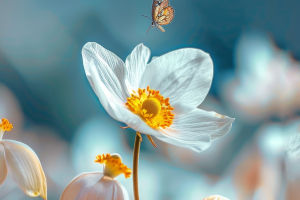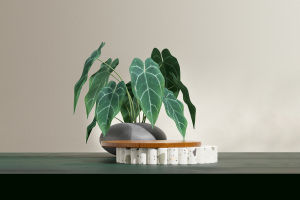In recent years, succulents have become the ideal choice for many due to their unique appearance and relatively easy care amid the gardening craze.
Not only do succulents add a touch of greenery to home environments, but they also help reduce stress and enhance quality of life.
However, despite the simplicity of succulent care, there are still key points to keep in mind. Here are six tips for taking care of succulent pots to help you better nurture these beautiful plants.
1. Choose the Right Soil
Succulents thrive best in well-draining soil. You can opt for soil specifically formulated for succulents, or you can improve drainage by adding sand and perlite to regular garden soil. Ideally, the soil pH should be between 6.0 and 7.0, providing the best growth environment for the plants.
2. Control Watering Frequency
Watering is one of the most important aspects of succulent care. The leaves of succulents can typically store moisture, so they do not need to be watered frequently.
Generally, watering once every two weeks in spring and autumn is sufficient, while summer may require weekly watering, and in winter, the frequency should be reduced to about once a month.
3. Provide Adequate Sunlight
Succulents prefer bright environments and grow best in locations with ample sunlight.
Ideally, succulents should be placed where they can receive at least six hours of sunlight daily, such as on windowsills or balconies. If the sunlight is too intense, especially in summer, consider providing some shade to prevent leaf scorching.
4. Pay Attention to Temperature Changes
Succulents have relatively flexible temperature requirements, but generally, the ideal growing temperature is between 18°C and 25°C. In winter, temperatures should be maintained above 5°C to prevent frost damage. During the high temperatures of summer, ensure good ventilation and cool down if necessary.
5. Fertilize Regularly
Although succulents have low nutrient requirements, appropriate fertilization can still promote growth and flowering.
Spring and autumn are the best times to fertilize; you can use fertilizer specifically designed for succulents, diluted according to the instructions. Avoid fertilizing in winter and summer to prevent affecting the plants' normal dormancy and growth.
6. Promptly Address Pests and Diseases
While succulents are relatively resistant to pests and diseases, regular checks are necessary to prevent any issues.
If you notice pests or disease spots, gently wipe the infected areas with a damp cloth, and if needed, use specialized pesticides or fungicides. Additionally, maintaining good ventilation and appropriate humidity can effectively prevent pests and diseases.
In conclusion, caring for succulent pots is not a difficult task. By mastering some basic care techniques, you can help your succulents thrive and showcase their unique beauty. Over time, you'll find that these small plants not only beautify your environment but also bring endless joy and a sense of accomplishment.


